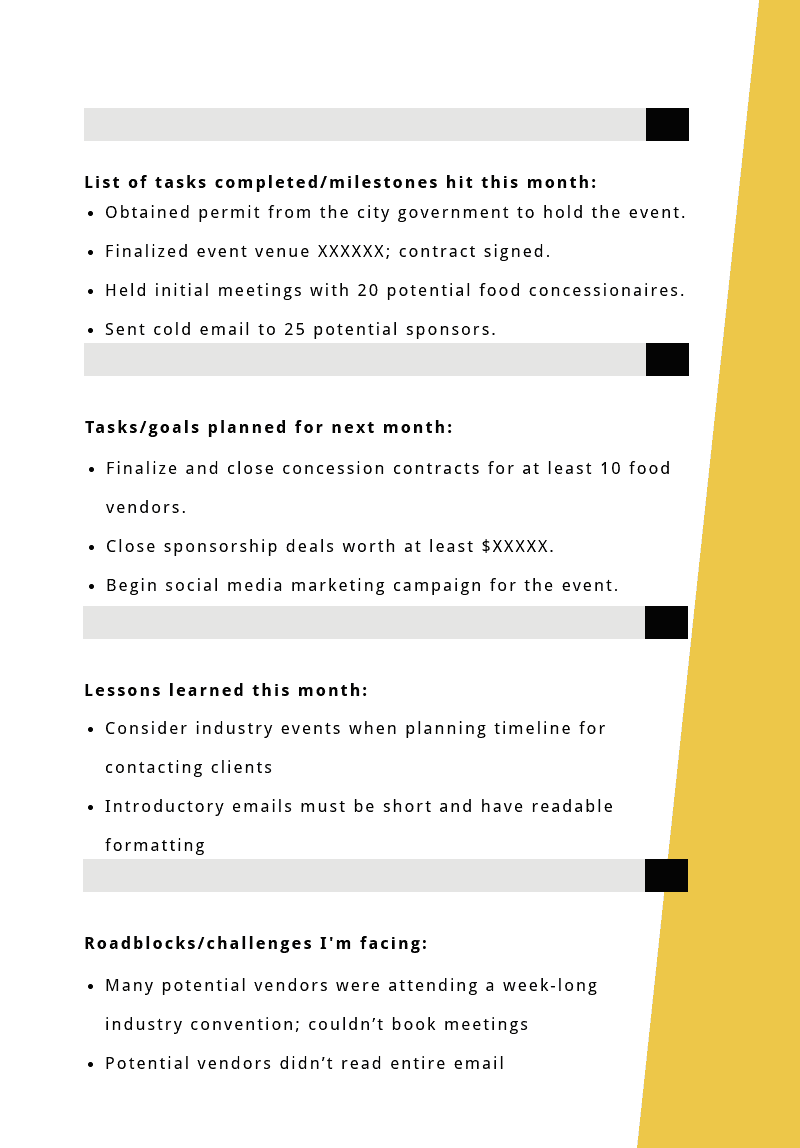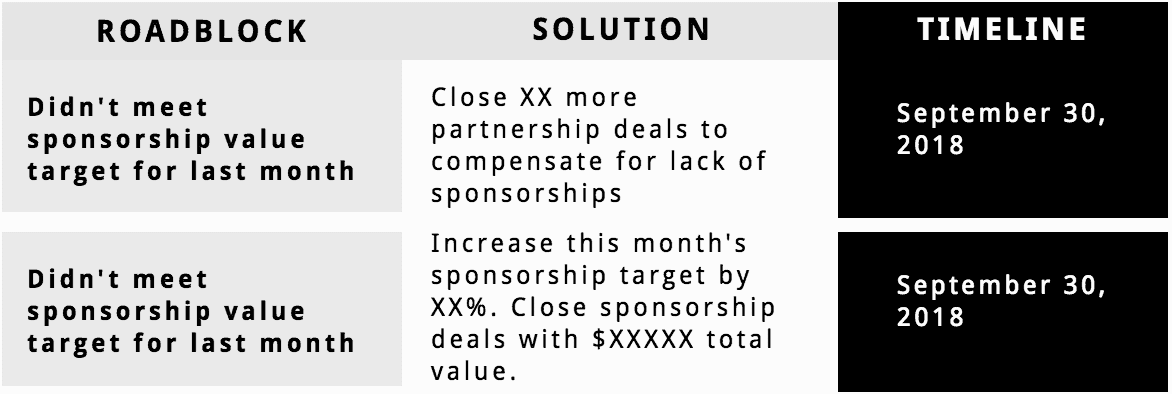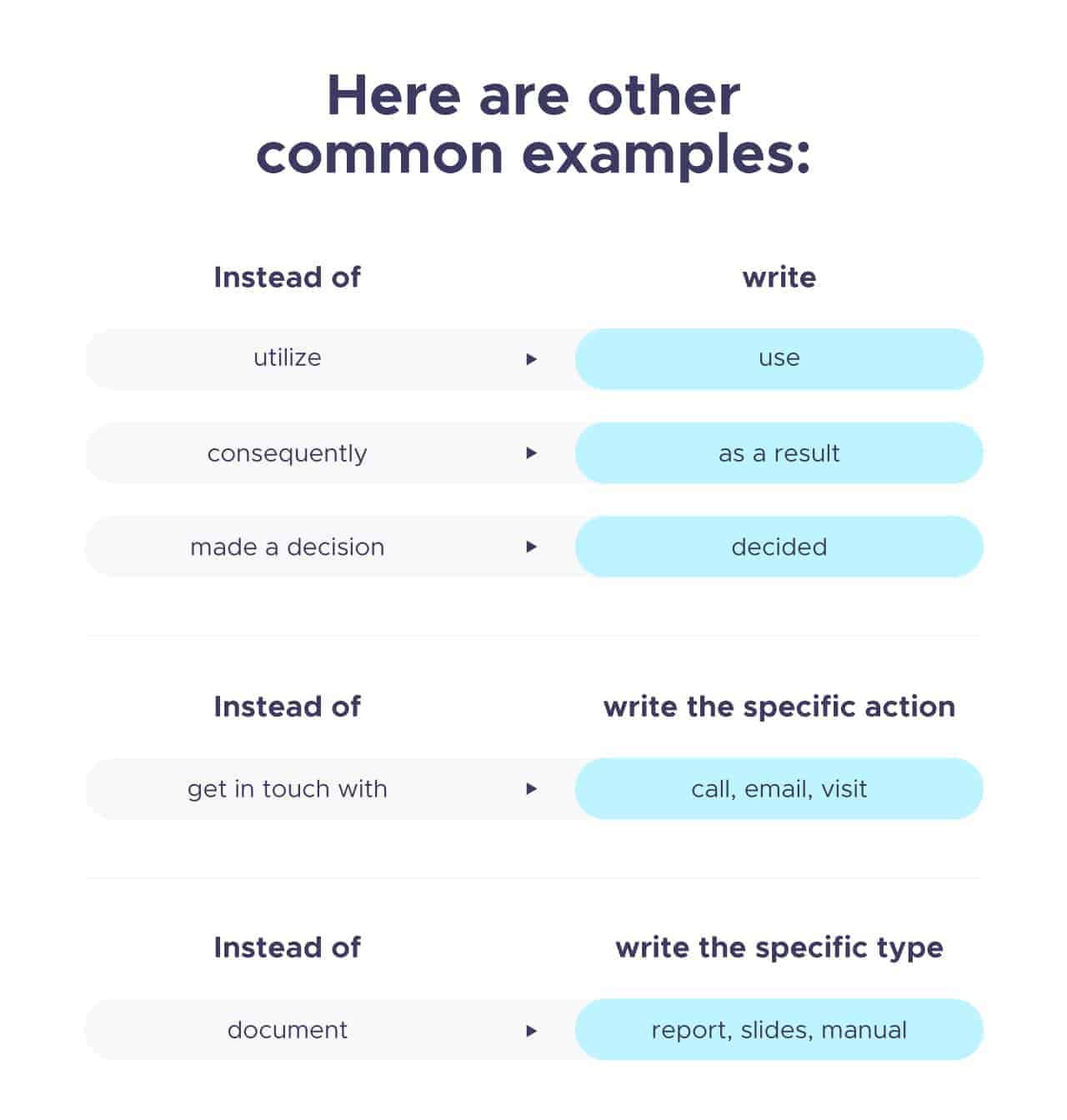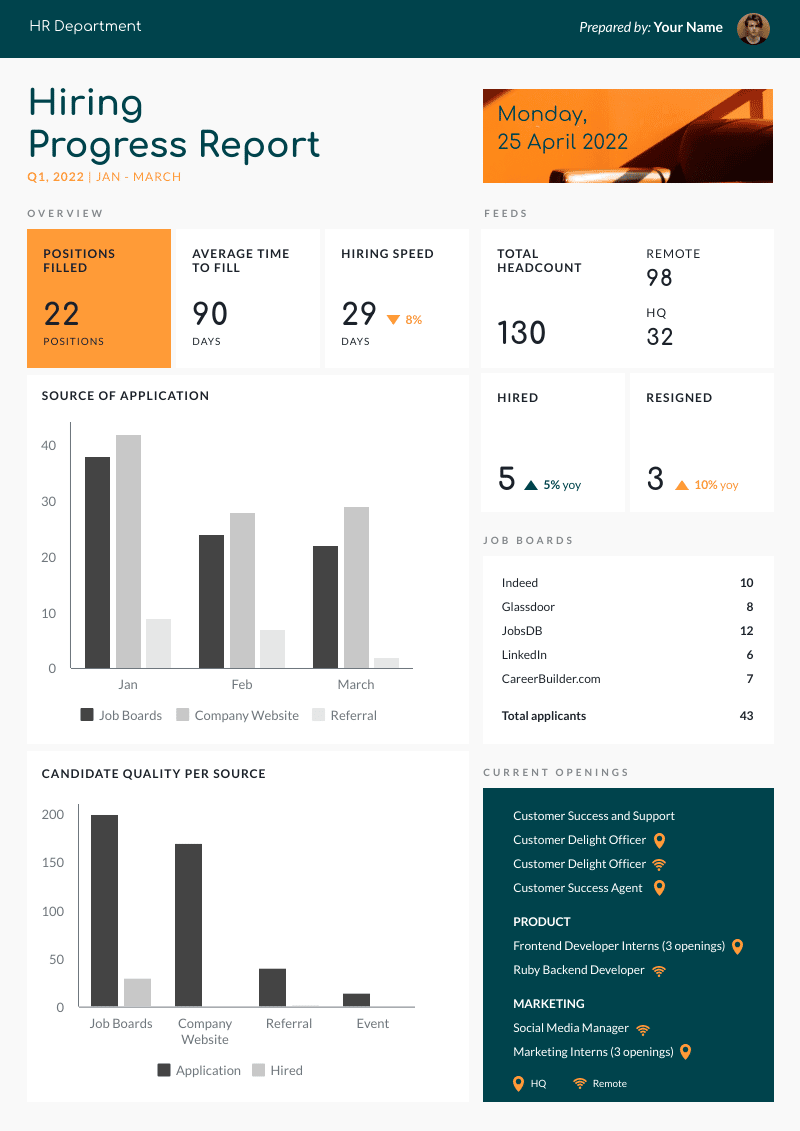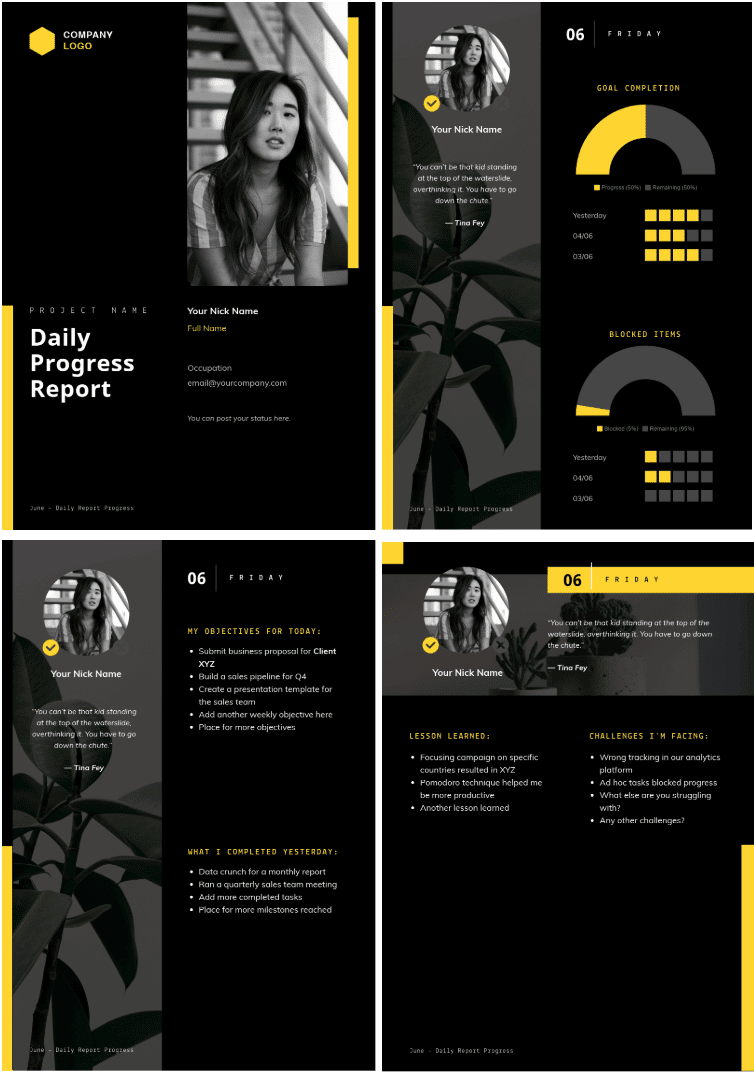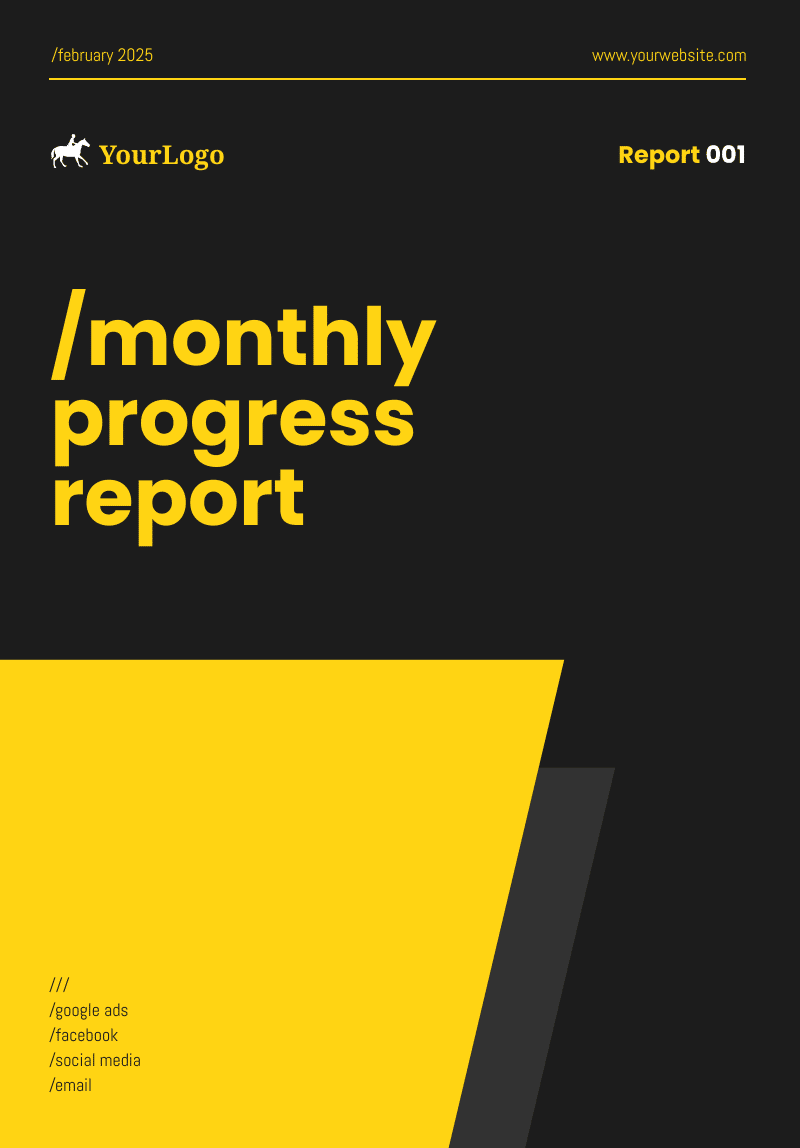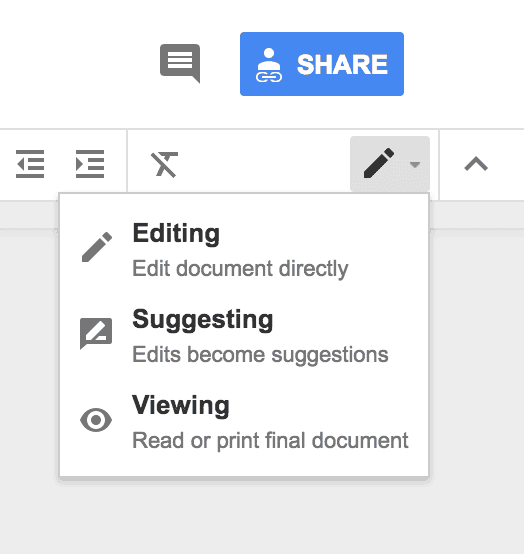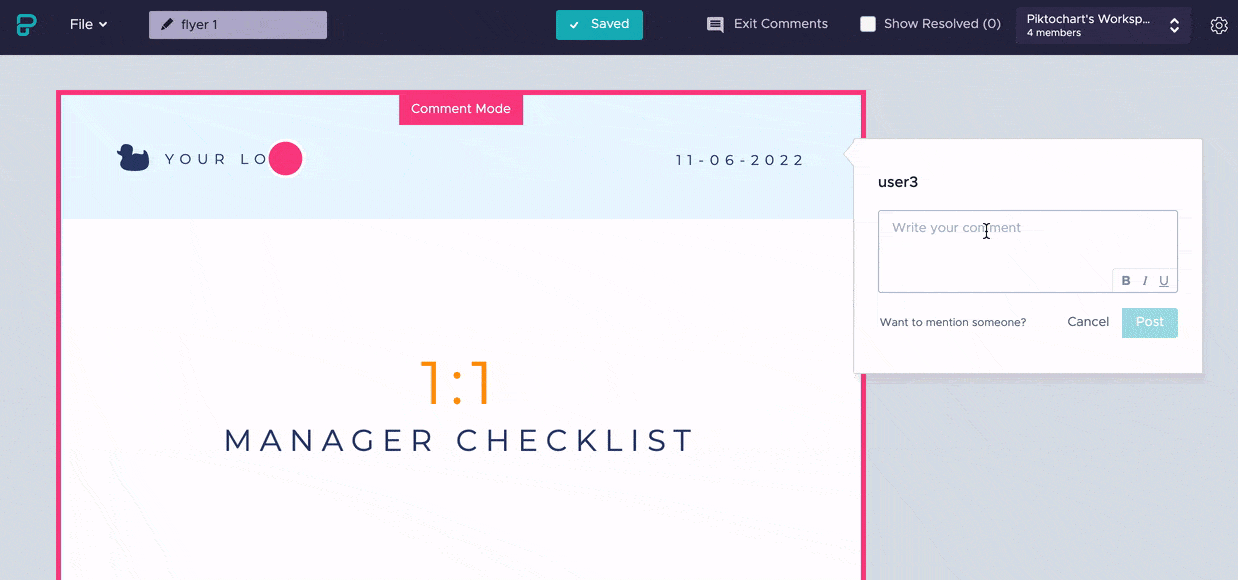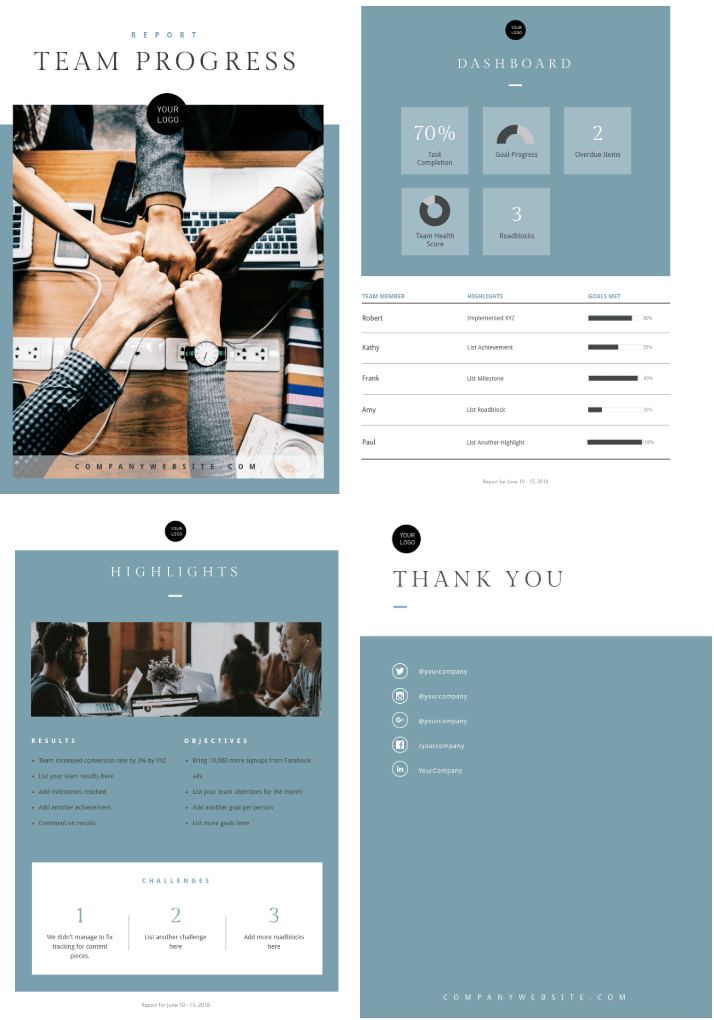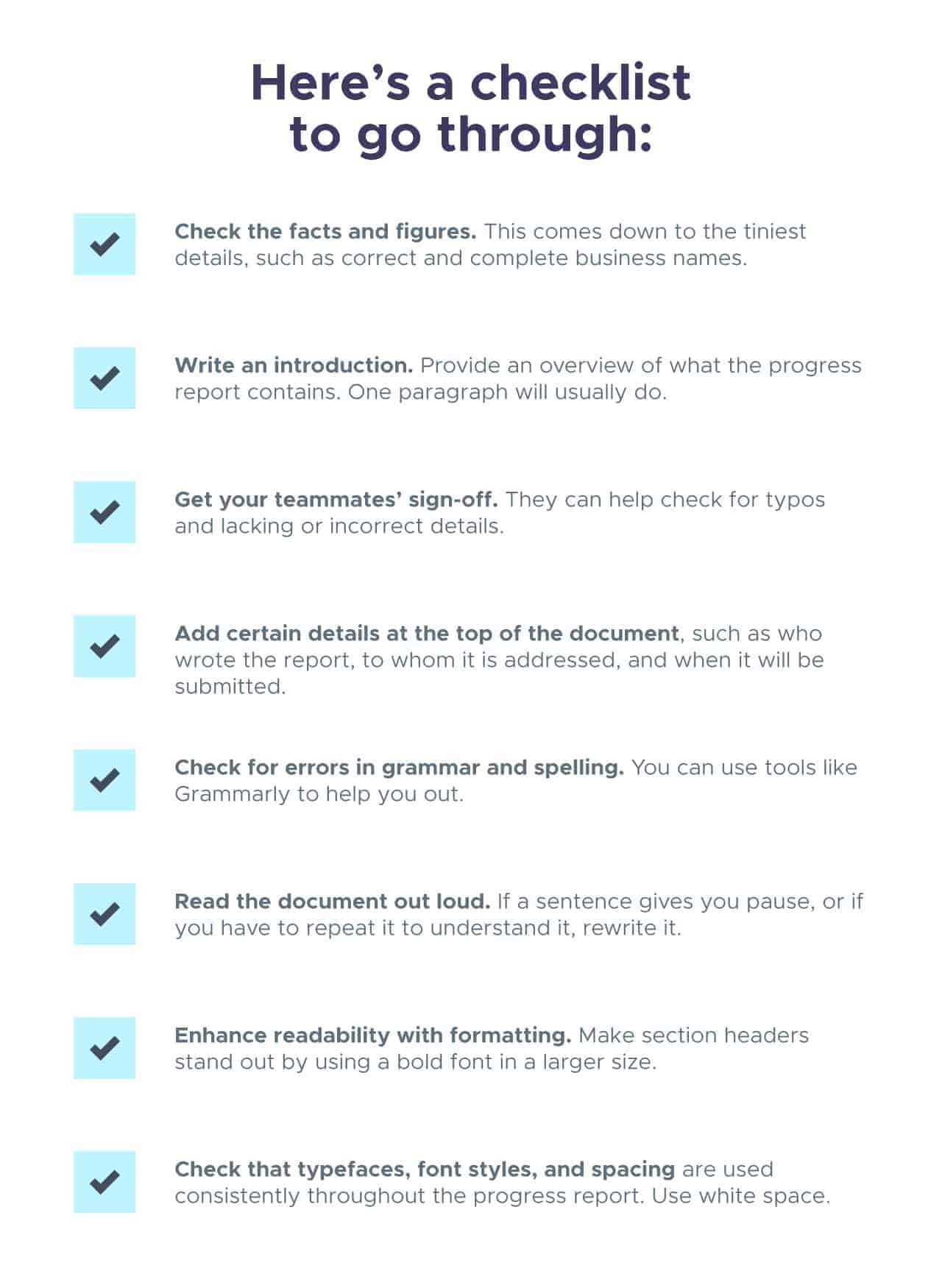Picture this: Days or weeks into a project, your supervisor asks for a progress report.
Depending on your experience with writing progress reports, you might respond with readiness, anxiety, or confusion. Where do you begin? How do you know you’ve created a satisfactory or even amazing final report? Fear not—the expert team here at Piktochart is here to help.
In this progress reporting guide, we’ll not only give you top tips on how to write a successful report but additionally provide you with progress report templates and checklists to keep you focused on the important stuff.
We begin, of course, with the all-important question anyone from a newbie to even a seasoned professional might have: “What is a progress report?”
Table of contents:
In case you prefer watching over reading, feel free to check out the video summary of this blog post:
What is a progress report?
A progress report is exactly what it sounds like—a document using simple and straightforward language that explains in detail what has been achieved and what else is needed for project completion. Essentially this document is a status update before the final report, outlining tasks completed by a team member, project manager, or team, along with what else needs to be done.
Whether you need to provide daily progress reports or even quarterly progress reports, this asset outlines the activities you’ve carried out, the tasks you’ve completed, and the milestones you’ve reached vis-à-vis your project plan.
Depending on the scope and complexity of the project, you might need to give a progress report weekly or monthly or for every 25% project milestone.
In terms of audience, a progress report is typically written for a supervisor, colleague, or client. Progress reports can be written from the perspective of one person as well as an entire team or department.
Throughout your career, you’re likely to be creating more reports than you can count (challenge for you: count them and find how many resources you’re using!).
Perhaps you find yourself spending more time crunching data and plugging numbers into graphs than actually working.
Reports don’t have to be as time-consuming as they often are. Progress report templates are time-savers!
Get your free Piktochart account so you can follow along as we share more templates below.
We also tapped into the brilliance of Kevan Lee of Buffer in this interactive content experience to help you with your progress report projects.
Dive right in here, and learn some reporting hacks from Kevan.
Why is a progress report important?
Sometimes it might feel like writing about your progress in detail is redundant, especially when you’ve been regularly communicating with your supervisor, teammates, and client throughout the course of the project. Like any project manager, you probably think there are more important things to work on.
But this type of professional report is actually quite useful for several reasons.
1. It gets everyone on the same page
Each person who receives a copy of the report will know what has been accomplished and what is remaining. This prevents confusion about what has been or has yet to be done. Additionally, it provides proof and data about the respective project that can be cited and sourced if and when questions arise in the future.
2. Writing progress reports facilitates collaboration
This is especially important when different teams or departments work together. Knowing what another team is prioritizing helps prevent working in silos and also reduces task redundancy. Additionally, progress reporting helps a team identify areas where it can offer help or collaborate with others.
When teams can track progress on where other teams are on the project timeline, project managers get a better idea of the current status. They can reassign resources to make sure everyone is on track to hit the deadline for the current project, which can be tricky if you’re managing remote teams.
If you’d like to learn more about how you can work together with your team on a report, sign up for a free Piktochart account and try our online report maker.
3. It improves transparency and accountability by providing a paper trail
When you submit your report, you’ve placed on record that you’ve accomplished a task or explained why your results were different than expected. Once the document has been accepted, it becomes part of the project’s official documentation.
So, just in case someone accuses you in the future of failing to accomplish a task or not reporting a problem, you can point to the progress report as proof that you did so.
On the flip side, if your project ever gets nominated for an award, you can be sure validators will come seeking documents that explain how the entire thing was accomplished.
4. It improves project evaluation and review
Next time you plan for a project, your team can examine documents, including progress reports, of previous projects to find out what was done right, what went wrong, and what can be improved.
Previous reports can shed light on systemic issues, loopholes, and other causes of delay or failure—both internal and external—that must be avoided or resolved.
5. It provides insights for future planning
When the supervisor knows what tasks have been accomplished, he or she can focus on monitoring progress toward the next stages of the project.
When a report shows that delays have occurred, the supervisor is able to investigate the problems that hindered progress and take steps to prevent them from happening again in the future.
The supervisor will also be able to adjust the project timeline if absolutely needed or instruct teams to double down.
Ultimately, all the valuable insights from the project documentation can increase the chance of success for future projects.
Here is a progress report format example:

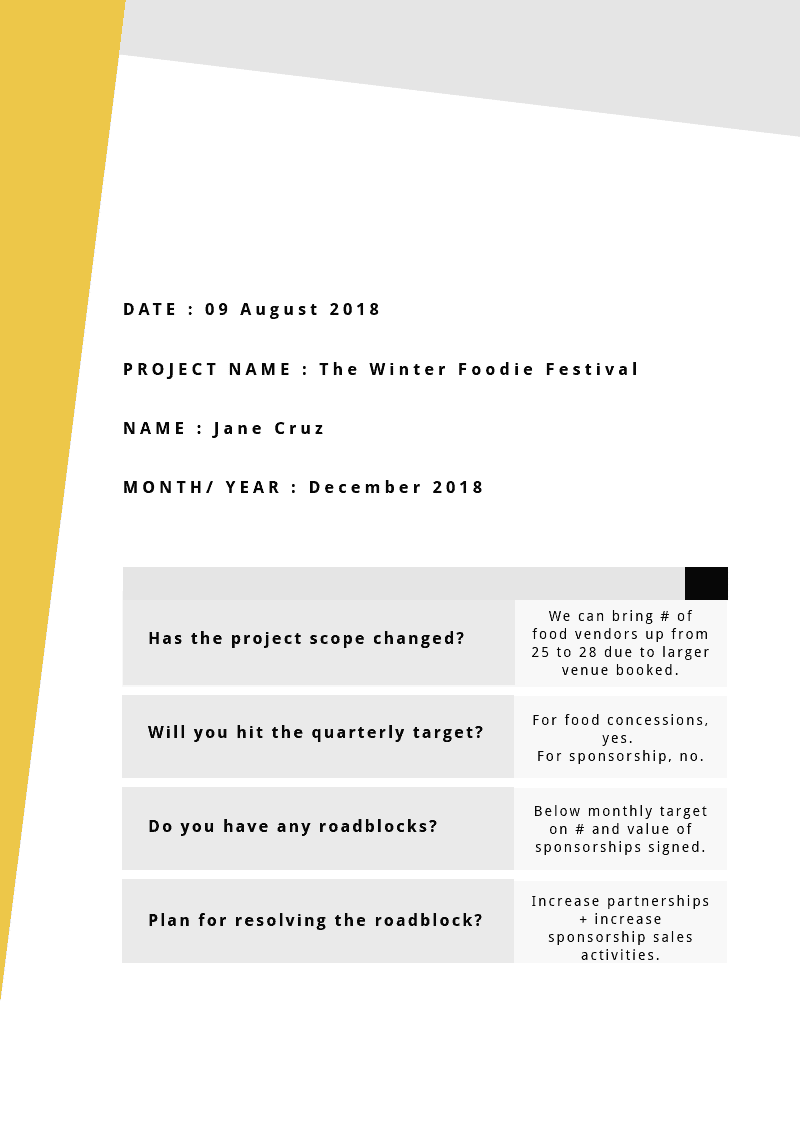
How to write progress reports
Have you ever found yourself stuck tapping your pen or staring at a blinking cursor, unable to begin writing?
Writer’s block is not an unusual experience when creating progress reports, especially for those whose jobs typically don’t involve drafting a long document or creating a formal report.
One reason people may find it difficult to write these reports is the thought that they’re not ‘writers.’ Yet, this is simply a negative mindset.
Reports don’t require sophisticated language—in fact, the simpler, the better.
Here are some writing tips on progress reporting:
“Piktochart is my go-to tool when I’m looking for a way to summarize data that is easy for our upper management to review. Piktochart provides me with the tools to display data in a creative, visually appealing way.” – Erica Barto, Selection, Testing & Assessment Specialist at Valero Energy Corporation
Create a report, presentation, infographic, or other visuals online with Piktochart. You don’t need any graphic design experience to make professional visual content. Sign up for free.
1. Think of it as a Q&A
Before you start worrying about your reporting frequency and whether you should provide monthly reports or weekly reports, take a step back and focus on the purpose of the report itself.
In essence, the reporting process comes down to Q&A; you’re answering key questions about your progress. Imagine your manager, colleagues, or client asking you their most important questions, and you’re simply providing them with answers on the project status.
For example, let’s say that you’re organizing a weekend fair with food stalls and music and that you’re put in charge of food concessions.
The project plan might require you to have secured letters of intent (LOI) from at least 10 businesses by the end of the first month.
Your progress report would then outline the companies or entrepreneurs who have sent LOIs, including a description of their businesses and plans for their food stalls. If talks are in progress with other businesses that haven’t yet sent LOIs, you can include that and explain when they’re expected to send in their letters.
On the other hand, if you haven’t met your target, you’d have to explain why but also narrate the efforts you have exerted and the expected timeline for achieving the desired results.
2. Use simple and straightforward language
This doesn’t mean you can’t use technical jargon.
For example, if you’re in the construction business, you don’t have to avoid using terms like “tender” or “variation” or “risk management.”
But otherwise, speak plainly. Use clear and concise language.
One misconception in business writing is that complexity impresses. In truth, it only causes confusion. Fact is, being able to speak plainly about your subject indicates that you understand your subject matter inside out.
Let’s get specific. One thing that makes business documents dreary is the transformation of verbs into nouns—just like I did there.
If we had to rephrase that to keep the verb, we’d write, “transforming verbs into nouns.” It sounds simpler and gets to the point.
3. Avoid using the passive voice where possible
Sometimes, you can’t avoid using the passive voice in formal documents that prohibit the first-person point-of-view. But when done well, it helps to make your progress reports more relatable.
Going back to the food concession example, a passive sentence would read: “Research on potential food concessionaires was carried out.”
To make that sentence active, give it an actor (which is the team in this case), as in: “The team researched on potential food concessionaires.”
4. Be specific
A study published in the Journal of Cognitive Neuroscience found that when you use concrete words, you tend to engage both the left and right parts of the brain, while the right region tends to remain unstimulated by abstract words.
While the jury is still out on exactly how word meanings are represented in the mind, we can agree that the phrase “a merry sound” doesn’t stir the imagination as much as “tinkling bells”.
“A hot day” doesn’t activate visual imagery as much as “a melting popsicle” does. When a reader’s mind is stimulated by words, it’s less likely to drift off.
Taking the previous example, “researched on potential food concessionaires” doesn’t evoke a visual image. Meanwhile, “built a list of 50 potential food concessionaires” is more concrete, especially when you add details of what food items might be sold.
5. Explain jargon if needed
This depends on who will be reading your progress reports, and if you’re using very specialized jargon that only members of your team would be familiar with.
For example, in a report written by a construction team addressed to the project manager, construction jargon could be used as the recipient obviously understands it.
6. Spell out acronyms when they first occur in the document
Don’t assume that every single person reading the report will understand all the acronyms you use without you spelling them out.
For instance, in construction work, SWMS should first be spelled out as “safe work method statement”. ‘Pre-starts’ should be spelled out as ‘pre-start checks’.
So in your report, it would look like this: “safe work method statement (SWMS)”, then all subsequent references are free to just be SWMS.
7. Stick to facts
Avoid providing an opinion, unless it’s part of the project.
For instance, your task might be to analyze data and offer your interpretation and prediction. In that case, you can offer your speculation and point of view, as long as you have evidence to back you up.
8. Use graphics to supplement the text
Avoid writing down a long series of numbers in a sentence. Try using different types of graphs, tables or charts, especially when dealing with a series of numbers.
Here at Piktochart, we have many progress report templates, and the hiring progress report below is a great example.
When using graphs or charts, try out several types to determine which ones best present your data. You might use a bar graph, pie chart, line graph, or even scatter plot. When doing so, though, spend time distinguishing different data sets from the others by using labels and colors.
Don’t worry if this sounds daunting—there are plenty of software that can help you visualize data, including the most basic examples, MS Excel and Numbers for Mac.
Feel you’ve got enough to information to get started? You can create a report in minutes with our AI report generator. Simply share your prompt on what type of report you want, and our AI tool will suggest several templates to choose from. You can pick the most appropriate one, then customize it in our editor.
How to structure progress reports
You may still be wondering about the exact process of how to write a progress report.
Armed with all of these practical tips, how do you put the report together?
First, it depends on the type of report, as well as the intended reader. A progress report may be written daily, weekly, or monthly. It may be written for an individual or a team.
As you’ll see in the examples below, the main parts of a progress report are:
1. Introduction
This part provides an overview of the contents of the progress report. It’s best to write this after you’ve completed all the other parts of the report. That way, you’ll be able to provide an accurate summary.
Keep it short and simple. One or two paragraphs will do.
2. Accomplishments
Numbers and details are your friends, especially when writing this section of the progress report. The accomplishments you write should correspond to your goals.
3. Goals
What were your goals for the period covered by the report?
This could be a goal for the day, week, month, or quarter. On the other hand, it could be a team goal, too.
Be concrete when writing goals. For instance:
Avoid providing too much detailed information. The simpler this section is, the easier it is for stakeholders and the project team to see the project priorities.
4. Roadblocks
Explain what situations, if any, prevented you from achieving your goals, or may have hindered the project’s progress.
But don’t stop there. Be proactive and present an action plan and timeline for resolving the roadblocks. Include details, such as funds, materials, and human resources you may need to implement the solution.
Progress reporting templates you can edit right away
To guide you better, here are progress report template examples that are visually attractive and highly readable.
These templates are available if you sign up for a free Piktochart account. Once you log in, use any of the templates below and edit the elements and text to make it your own.
1. Daily progress reports
A daily progress report includes your goals for the day, as well as your accomplishments the previous day. It also explains challenges encountered in performing tasks and achieving goals.
Another section under the daily report is ‘lessons learned’. These need to be directly related to the day’s tasks and challenges, as well as to the previous day’s accomplishments.
2. Weekly progress report
Weekly progress reports provide a week-by-week breakdown of what has been accomplished and what tasks remain to be completed.
Just like a daily report, a weekly progress report may include challenges and lessons learned. Examples are included in the templates below.
To get a better idea of this, let’s go back to the events example:
Challenges
- Many potential vendors were attending a week-long industry convention; couldn’t book meetings.
- Potential vendors didn’t read the entire email.
Lessons Learned
- Consider industry events when planning a timeline for contacting clients
- Introductory emails must be short and have readable formatting
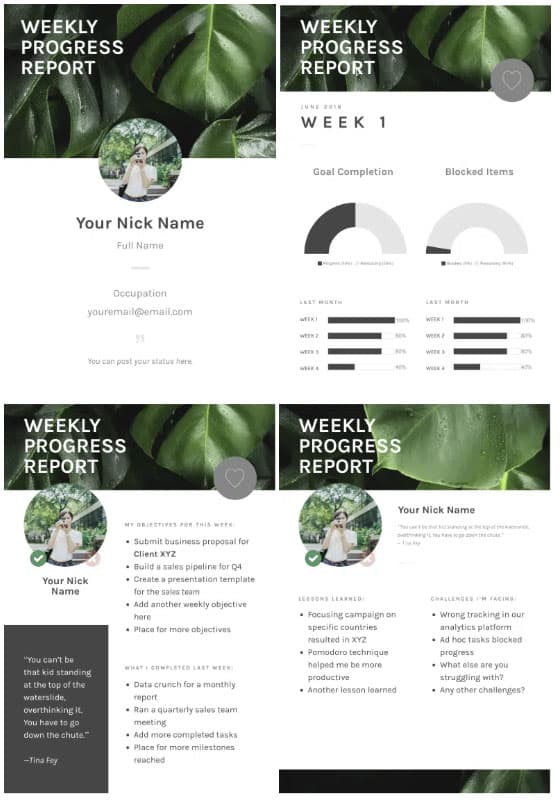
3. Monthly progress reporting
A monthly report is necessary for projects with longer durations. The report may provide both monthly and quarterly data on project progress.
4. Team progress reports
Team progress reports provide information on both team and individual milestones and progress status.
Now this one is more complicated, simply because it involves several people who may have worked on different tasks.
It’s not enough to just let one person make the report. Of course, one person can do the typing, but everyone must provide input and feedback.
One way to keep a record of different team members’ input is to keep track of edits they have made.
To do this, simply enable tracking of changes on a Word document, or on Pages for Mac users.
When working on a collaborative tool like Google Docs, click the pencil icon on the top-right part of the window, and choose “Edits become suggestions” on the drop-down menu. Here’s what that looks like:
On the other hand, team members can insert comments or questions. Again, you can do this easily on a Word document, as well as on software that let you comment on shared documents, like Google Docs and Piktochart.
Here’s what it looks like in Piktochart (learn more about this feature in our guide to annotated comments for teams):
Here’s one example of Piktochart’s many team project report templates.
Progress report checklist
One last thing… You’ve finally finished typing up your report—breathe a sigh of relief, but don’t hit ‘send’ just yet.
Go over it at least once (better to do it more than once, especially if it’s a team report). Re-read the article, edit the content as needed, then ask a teammate to proofread with a fresh pair of eyes.
Finish your progress report on time
Be more accountable and efficient with your progress reports using Piktochart’s professional-looking and editable progress report templates.
Try Piktochart for free

